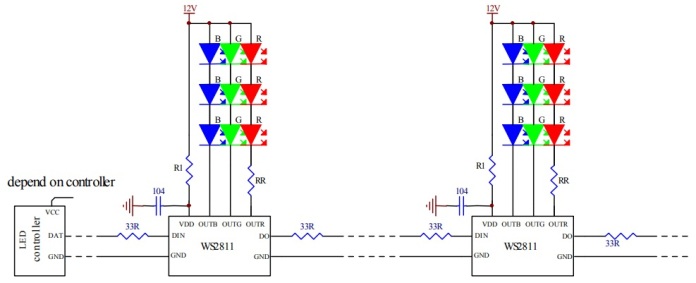Categories: Featured Articles » Sources of light
Number of views: 4678
Comments on the article: 0
Address LEDs and LED strips
To begin with, in a regular LED strip, regardless of whether it is single-color or RGB, all the LEDs of the tape are powered and lit at the same time, since they all receive power in parallel from one source, a driver that works according to its own algorithm, implemented directly inside the driver, and it simply supplies power to the entire tape at once, in fact - to all LEDs connected in parallel to it.
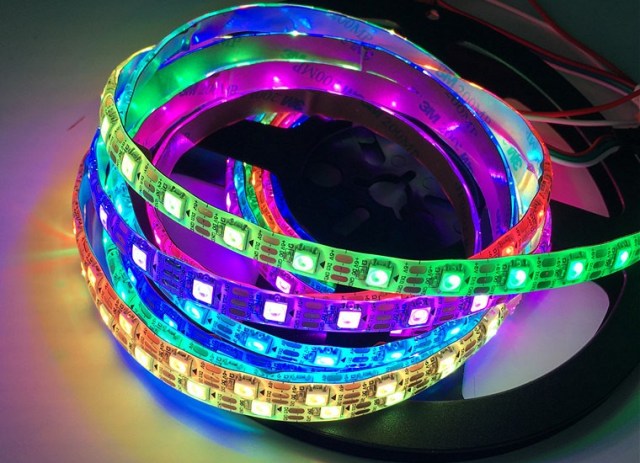
Address LED strip, in contrast to the usual, contains the so-called address LEDs. This means that although each LED receives power in parallel from a common source, each LED turns on according to an individual command, and that means that each LED can get its own unique shade, one of 2553 = 16581375 possible.
Each LED in the tape has its own unique address, at which the driver accesses it using a three-bit command. Commands are sent to the line sequentially. To do this, use the third DATA INPUT wire on the tape.
Near each LED on the address tape has its own microchip. Today, address tapes with WS2811 PWM chips are very common. Microchip housings DIP-8 or SOP-8. Each chip has three outputs - each for its own color, data transfer input, data transfer output, power output, mode setting input and general output.
There are tapes powered by 5 volt chips, but the most common are 12 volt powered tapes, where one such chip controls three LEDs at once. The chips on the tape are connected to each other in series through the inputs and outputs of the data transfer.
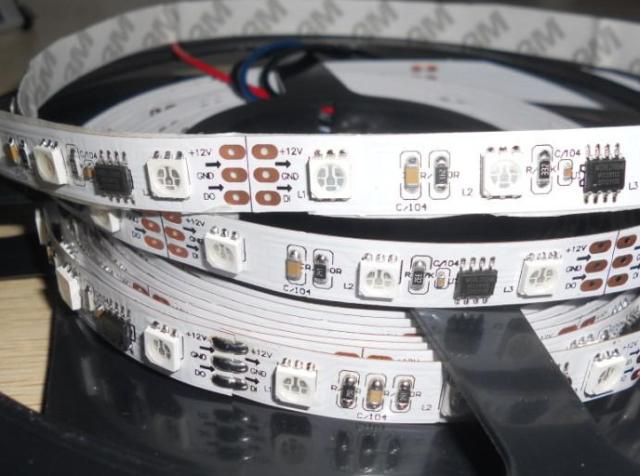
WS2812B is a more compact modification of the chip, designed for installation inside the housing of the SMD 5050 LED. So the whole assembly has only 4 outputs: power, common output, data transfer input and data transfer output.
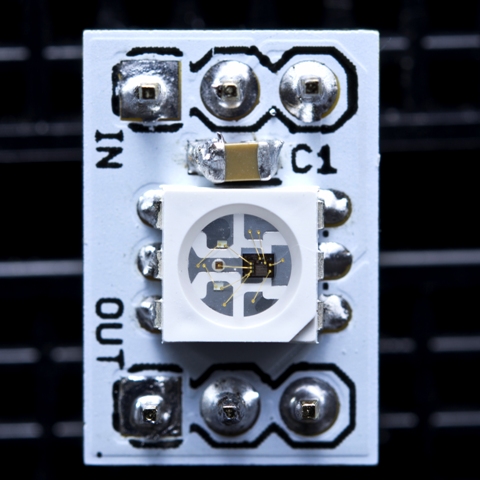
Address tapes are more expensive than ordinary tapes, and are usually used where simple tapes for some reason are not applicable: full-color modular assemblies, decorative lighting with “soft light” control, outdoor advertising, etc. The peculiarity of such assemblies is that they are able to change the color and brightness of their individual segments according to a more complex algorithm than simple LED-tapes, even if these LED-tapes are equipped with smart drivers.
The PWM control signal is supplied from a special programmed controller to the tape input, and transmitted sequentially to the input of one chip (digital input - DI), leaves it (digital output - DO), then passes through the second chip, etc. implement using the program on arduino.
FastLED and Adafruit NeoPixel arduino libraries are suitable for interacting with address tapes. Inside the libraries contain full-fledged sketches, taking which as a basis it is easy to master the independent creation of new lighting effects. In the sketch header, you must correctly specify the number of tape LEDs and the data port number.
Each RGB LED In fact, it has three LEDs (red, green and blue), therefore, to control one segment (one segment is an RGB LED with a chip), 3 bytes of information are required, one byte is one color.
Each byte can take one of 255 values, therefore, in principle, each RGB LED is able to give light one of 2553 = 16581375 shades. The number of bytes in one command is thus 3 times the number of consecutive work segments in the tape.
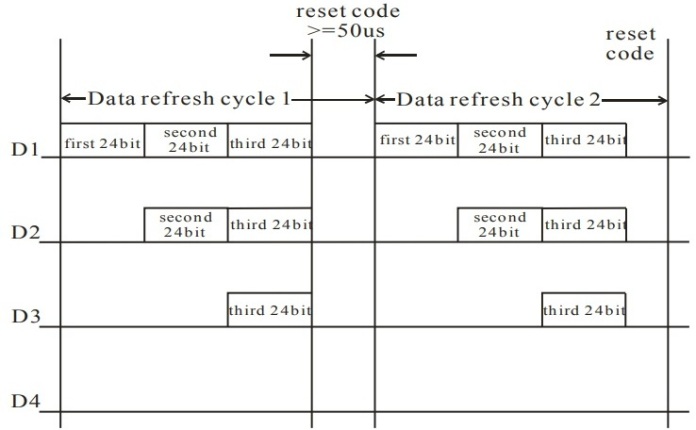
The line sent goes to the first chip, which receives the first three bytes of information, passing the rest further through the digital output (DO) to the next chip. A pause of 50 μs is maintained, which means that the next chip in the queue must receive its three bytes of information. If the pause lasts longer than 50 microseconds, this means that the cycle is completed and a repetition of the working cycle is ahead.
See also:What are the types of LED strips
Light music on the address LED strip WS2812B and Arduino:
See also at bgv.electricianexp.com
:


